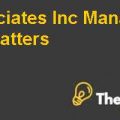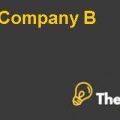Introduction
Allied EnergyService (AES) was founded in 1981.AES is included in fortune 200 companies, and by 2002 it was one of the largest independent power suppliers in the world.AES was developing and expanding the network where there was high demand of electricity.AES’ business model is involved in generation and distribution of electrical power.In the decade of 1990s, AES was more aggressive to expand in foreign countries in form of expansion where there were more possible opportunities of growth and to increases capacity of power generation and distribution. AES initiated its international expansion from year 1991.
Due to the expansion, revenue streams have increased but other complex issues and risk enhanced as well. AES was successful to diversify its operations in different countries but every country has its own risk such as currency risk, political stability risk, economic risk, and other country specific risk. AES has built a portfolio of diversification in which large utilities have been generating revenues of $3317, by contract generation revenues of $2478. By the geographic dispersion, AES is generating major revenues from South America while second source of revenue is North America and other major source of income is Europe/Africa and Caribbean.
In this case, AES is facing an issue to calculate cost of equity and cost of debt. As AES is not operating in one country and sector,therefore,every country and sector is have different risks and different cost of capital.AES will have to follow the financial management rules in order to calculate the cost of equity and cost of debt.
What is wrong about the re of AES?
For the calculation of cost of equity, the standard normal method is to calculate thorough the Capital Asset Pricing Model or CAPM.CAPM is based on assumption which is risk that can be diversified through portfolio management will not yield any premium that is unsystematic risk while risk that cannot be diversified will yield premium that is systematic risk or un-diversifiable risk. Systematic risk is inherent to entire market and volatility affects the whole market. Examples of systematic risk are interest rates, wars, recession that can be diversified will attract an additional amount of premium. Unsystematic risk is a specific risk that can be diversified through proper and correct asset allocation. Different industries have different type of risk and within different industries, different shares have different correlation with overall market by diversifying into different stocks and different industries risk can be minimized.
CAPM is model that describes the relationship between risk and expected return and used to calculate the cost of capital the formula for the CAPM is as follows,
Risk free rate is usually the government T-bill rate. For the calculation of beta, firstly the beta of similar company is taken from the stock exchange and then it is un levered to arrive at beta assets. After the unlevered of beta asset it is again levered using the own company’s target gearing ratio and thenit is used to calculate the cost of equity. Levered beta is used to multiply with risk premium to arrive at final cost of equity as in CAPM. If a company uses mix of equity finance and debt finance then the cost of debt is also calculated using the Weighted Average Cost of Capital (WACC). If there are multiple sources of debt then each debt will be used separately in calculations.
Allied Energy Services Case Solution
In the current scenario, AES for the equity calculation is not using world beta and it is also not using the beta of particular project in specific country. World beta is not used on the basis that it will not completely reflect the risk and cost of equity will be under estimated. There is always difference in developing country and developed country correlation and volatility. Developed countries’stock markets are quite stable and are less volatile than developing markets which are less stable and more volatile.
AES is also not using the local CAPM where beta measures the covariance of the project return with the specific country equity market. Where there is no meaning full bench mark or indexes, then in this situation the alternatives are considered to calculate the local market risk that is specific to country in which AES wish to start the project....................
This is just a sample partial case solution. Please place the order on the website to order your own originally done case solution.












